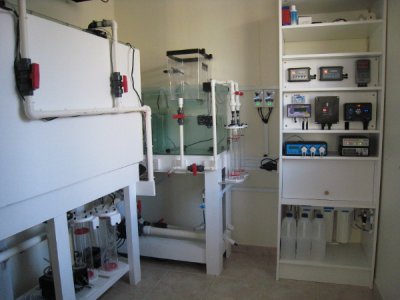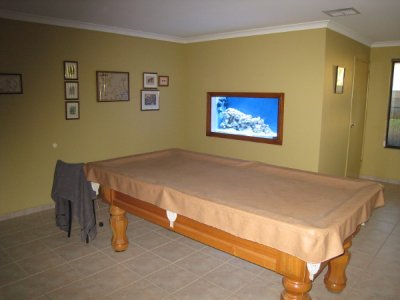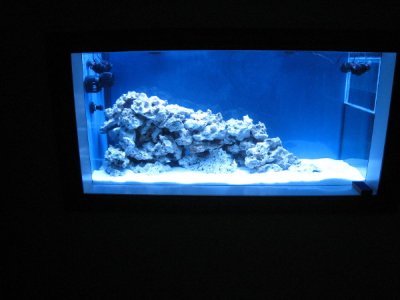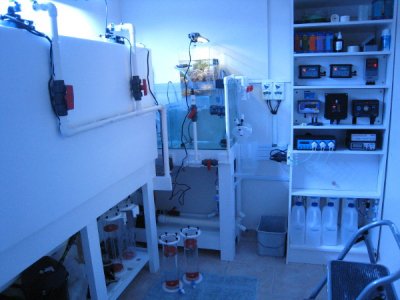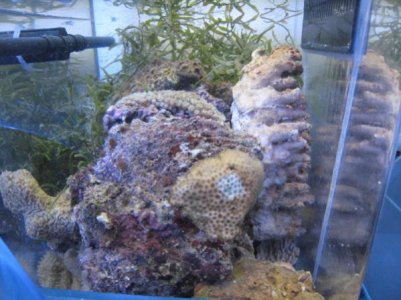Heliman- so the water will actually climb uphill as it goes from your DT to your sump (through the ball valve) even though it is not being "pumped" because the standpipe in your DT is higher than the lowest point on your sump feed- correct?
Yep...that's correct. There is a "natural" head between the DT and the sump of nearly 8 inches, therefore the water will "fall" up into the sump where it is pushed back into the DT by the return pump, thus maintaining this natural head.
The stand pipe does not really figure in this dynamic, because at equilibrium, when the whole thing is flat-out the water level in the DT overflow section (after the weir) is about 1.5 inches below the level of the DT.
When the system stops, if there were NOT a stand pipe, the DT overflow section would drain right down and expose the "planned" sand -bed. Therefore the standpipe limits the lowest level to which the Overflow section can drain to.
I pourposely cut the standpipe to a level below that of the overflow when it is running, about 4 inches in fact. I did this to ensure that no air was pulled into the standpipe by a surface vortex and removed the need for Beans, Dursos etc...and to avoid noise !!! As it is running now, the standpipe is always completely filled with water...no air, no bubbles, no noise.
But just to reinforce the point, the standpipe does NOT represent the water surface as in normal systems...it is there to maintain a minimum water level in the overflow section when/if the system stops for power outage/pump failure or whatever.

